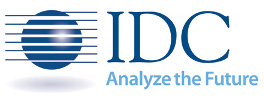Commercial and Public Sector investments to drive AR/VR spending
Tuesday, June 4th, 2019
Commercial and Public Sector Investments Will Drive Worldwide AR/VR Spending to $160 Billion in 2023, According to a New IDC Spending Guide
FRAMINGHAM, Mass. — Worldwide spending on augmented reality and virtual reality (AR/VR) is forecast to reach $160 billion in 2023, up significantly from the $16.8 billion forecast for 2019. According to the International Data Corporation (IDC) Worldwide Semiannual Augmented and Virtual Reality Spending Guide, the five-year compound annual growth rate (CAGR) for AR/VR spending will be 78.3%.
IDC expects much of the growth in AR/VR spending will be driven by accelerating investments from the commercial and public sectors. The strongest spending growth over the 2019-2023 forecast period will come from the financial (133.9% CAGR) and infrastructure (122.8% CAGR) sectors, while the manufacturing and public sectors will follow closely. In comparison, consumer spending on AR/VR is expected to deliver a five-year CAGR of 52.2%.
“A growing number of companies are turning to virtual reality as a way to drive training, collaboration, design, sales, and numerous other use cases,” said Tom Mainelli, group vice president, Devices and Consumer Research at IDC. “Augmented reality uses cases are also growing with a wide variety of companies leveraging next-generation hardware, software, and services to fundamentally change existing business processes and bringing new capabilities to first-line workers who require hands-free technology.”
The commercial use cases that are forecast to receive the largest investments in 2023 are training ($8.5 billion), industrial maintenance ($4.3 billion), and retail showcasing ($3.9 billion). In comparison, the three consumer use cases for AR/VR (VR gaming, VR video/feature viewing, and AR gaming) are expected to see spending of $20.8 billion in 2023. The use cases that will see the fastest spending growth over the forecast period include AR for lab and field education, AR for public infrastructure maintenance, and AR for anatomy diagnostic.
Hardware will account for more than half of all AR/VR spending throughout the forecast, followed by software and services. Strong spending growth (189.2% CAGR) for AR viewers will make this the largest hardware category by the end of the forecast, followed by VR host devices. AR software will be the second fastest growing category, enabling it to overtake VR software spending by 2022. Services spending will be driven by strong growth from AR consulting services, AR custom application development, and AR systems integration.
“Augmented reality is gaining share in the commercial market due to its ability to facilitate tasks, provide access to resources, and solve complex problems,” said Marcus Torchia, research director, Customer Insights & Analysis at IDC. “Industries such as manufacturing, utilities, telecommunications, and logistics are increasingly adopting AR for performing tasks such as assembly, maintenance, and repair.”
On a geographic basis, China will see the largest AR/VR spending totals throughout the forecast, followed by the United States. The two countries will account for nearly three quarters of all spending worldwide by 2023. Western Europe will see the fastest growth in AR/VR spending with a five-year CAGR of 101.1%, followed by the U.S. and China.
The Worldwide Semiannual Augmented and Virtual Reality Spending Guide examines the AR/VR opportunity and provides insights into this rapidly growing market and how the market will develop over the next five years. Revenue data is available for eight regions, 12 industries, 26 use cases, and eleven technology categories. Unlike any other research in the industry, the comprehensive spending guide was created to help IT decision makers to clearly understand the industry-specific scope and direction of AR/VR expenditures today and in the future.
About IDC Spending Guides
IDC’s Spending Guides provide a granular view of key technology markets from a regional, vertical industry, use case, buyer, and technology perspective. The spending guides are delivered via pivot table format or custom query tool, allowing the user to easily extract meaningful information about each market by viewing data trends and relationships.
Latest News
- Netflix posts first quarter 2024 results and outlook
- Graham Media Group selects Bitmovin Playback
- Dialog, Axiata Group, Bharti Airtel agree on merger in Sri Lanka
- Yahoo brings identity solutions to CTV
- Plex has largest FAST line-up with 1,112 channels
- TV3 migrates from on-prem servers to AWS Cloud with Redge